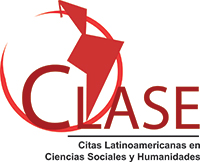Epidemiological analysis of suicidal ideation in university students
Abstract
Suicidal ideation is a social phenomenon of increasing prevalence worldwide. Understanding its epidemiological behavior and risk factors is essential for developing appropriate preventive policies. Methods. A prospective, multicenter, experimental, and uncontrolled study was conducted on the university population from the administrative and health areas in Veracruz, Mexico. Suicidal ideation was measured using Beck's Suicidal Ideation Scale. Statistical analysis was performed using the Chi-square test and the Kruskal-Wallis test. Results. A total of 537 individuals from the fields of Medicine, Dentistry, Physical Education, Public Accounting, and Business Management were included. No differences were found in their sociodemographic characteristics. The prevalence of suicidal ideation was 10.06% (10.63% in females vs. 9.32% in males). Statistically significant differences were found only in the history of psychiatric diseases and the use of psychotropic medications. Conclusions. The prevalence of suicidal ideation and the risk factors detected in our sample are similar to those reported in previous reports; this information should be considered in the design of preventive programs.
Downloads
References
Beck, A. T., Weissman, A., Lester, D., & Trexler, L. (1976). Classification of suicidal behaviors: II. Dimensions of suicidal intent. Archives of General Psychiatry, 33(7), 835–837. https://doi.org/10.1001/archpsyc.33.7.835
Becker, S. P., Dvorsky, M. R., Holdaway, A. S., & Luebbe, A. M. (2018). Sleep problems and suicidal behaviors in college students. Journal of Psychiatric Research, 99, 122–128. https://doi.org/10.1016/j.jpsychires.2018.01.009
Brosnahan, J., Steffen, L. M., Lytle, L., Patterson, J., & Boostrom, A. (2004). The relation between physical activity and mental health among Hispanic and non-Hispanic white adolescents. Archives of Pediatrics & Adolescent Medicine, 158(8), 818. https://doi.org/10.1001/archpedi.158.8.818
Capdevila-Gaudens, P., García-Abajo, J. M., Flores-Funes, D., García-Barbero, M., & García-Estañ, J. (2021). Depression, anxiety, burnout and empathy among Spanish medical students. PloS one, 16(12), e0260359. https://doi.org/10.1371/journal.pone.0260359.
Córdova, M., Rosales, J. C., & Reyes, G. (2013). Ideación suicida en estudiantes de la Universidad Tecnológica de Costa Grande, Guerrero (México). Psicología Iberoamericana, 21(2).
Coffin, N., & Álvarez, M. (2009). Prevalencia de ideación suicida en usuarios que solicitan servicio médico o psicológico en una Clínica Escuela Universitaria. Revista Electrónica de Psicología Iztacala, 12(4), 105–120.
Desalegn, G. T., Wondie, M., Dereje, S., & Addisu, A. (2020). Suicide ideation, attempt, and determinants among medical students Northwest Ethiopia: an institution-based cross-sectional study. Annals of general psychiatry, 19, 44. https://doi.org/10.1186/s12991-020-00295-2.
Engelberg, H. (1992). Low serum cholesterol and suicide.*The Lancet, 339(8795), 727–729. https://doi.org/10.1016/0140-6736 (92)91203-I
Garofalo, R., Cameron, W. R., Kessel, S., Palfrey, J., & DuRant, R. H. (1998). The association between health risk behaviors and sexual orientation among a school-based sample of adolescents. Pediatrics, 101(5), 895–902. https://doi.org/10.1542/peds.101.5.895
Goldsmith, S. K., Pellmar, T. C., & Kleinman, A. M. (Eds.). (2002). Reducing suicide. National Academies Press. https://doi.org/10.17226/10398
Grasdalsmoen, M., Eriksen, H. R., Lønning, K. J., & Sivertsen, B. (2020). Physical exercise, mental health problems, and suicide attempts in university students. BMC psychiatry, 20(1), 175. https://doi.org/10.1186/s12888-020-02583-3.
Hawkes, C. H. (1992). Endorphins: The basis of pleasure? Journal of Neurology, Neurosurgery, and Psychiatry, 55(4), 247–250. https://doi.org/10.1136/jnnp.55.4.247
Hill, M. R., Goicochea, S., & Merlo, L. J. (2018). In their own words: stressors facing medical students in the millennial generation. Medical education online, 23(1), 1530558. https://doi.org/10.1080/10872981.2018.1530558
Howard, M. O., Perron, B. E., Sacco, P., Ilgen, M., Vaughn, M. G., Garland, E., & Freedenthal, S. (2010). Suicide ideation and attempts among inhalant users: Results from the National Epidemiologic Survey on Alcohol and Related Conditions. Suicide and Life-Threatening Behavior, 40(3), 276–286. https://doi.org/10.1521/suli.2010.40.3.276
Horgan, A., Kelly, P., Goodwin, J., & Behan, L. (2018). Depressive symptoms and suicidal ideation among Irish undergraduate college students. Issues in Mental Health Nursing, 1–10. https://doi.org/10.1080/01612840.2017.1422199
Jahangiri, S., Shaygani, F., & Ahmadi Marzaleh, M. (2023). Suicide among Medical Students and Residents in Iran: Potential Causes and Solutions. Archives of Iranian medicine, 26(1), 60–61. https://doi.org/10.34172/aim.2023.10.
Jasso-Medrano, J. L., & López-Rosales, F. (2018). Measuring the relationship between social media use and addictive behavior and depression and suicide ideation among university students. Computers in Human Behavior. https://doi.org/10.1016/j.chb.2018.05.003
Lee, H.-S., Kim, S., Choi, I., & Lee, K.-U. (2008). Prevalence and risk factors associated with suicide ideation and attempts in Korean college students. Psychiatry Investigation, 5(2), 86–93. https://doi.org/10.4306/pi.2008.5.2.86
Li, Z.-Z., Li, Y.-M., Lei, X.-Y., Zhang, D., Liu, L., Tang, S.-Y., & Chen, L. (2014). Prevalence of suicidal ideation in Chinese college students: A meta-analysis. PLOS ONE, 9(10), e104368. https://doi.org/10.1371/journal.pone.0104368
Liu, C. H., Stevens, C., Wong, S. H. M., Yasui, M., & Chen, J. A. (2019). The prevalence and predictors of mental health diagnoses and suicide among U.S. college students: Implications for addressing disparities in service use. Depression and anxiety, 36(1), 8–17. https://doi.org/10.1002/da.22830.
Lytle, M. C., Blosnich, J. R., De Luca, S. M., & Brownson, C. (2018). Association of religiosity with sexual minority suicide ideation and attempt. American Journal of Preventive Medicine, 54(5), 644–651. https://doi.org/10.1016/j.amepre.2018.01.019
Martínez, M. del C., Muñoz, G., Rojas, K., & Sánchez, J. A. (2016). Prevalencia de síntomas depresivos en estudiantes de la licenciatura en Medicina de Puebla, México. Atención Familiar, 23(4), 145–149. https://doi.org/10.1016/j.af.2016.10.004
Matheson, H. M., Barret, T., & Landine, J. (2016). Experiences of psychological distress and sources of stress and support during medical training: A survey of medical students. Academic Psychiatry, 40(1), 63–68. https://doi.org/10.1007/s40596-015-0360-x
Norman, J. (1977). Opiates, receptors and endorphins. British Journal of Anaesthesia, 49(6), 787–797. https://doi.org/10.1093/bja/49.6.787
Organización Mundial de la Salud. (n.d.). Suicidio: Datos y cifras. Recuperado de http://www.who.int/es/news-room/fact-sheets/detail/suicide
Organización Panamericana de la Salud. (2014). Prevención del suicidio: Un imperativo global (OPS, Ed.). Organización Panamericana de la Salud.
Peng, P., Hao, Y., Liu, Y., Chen, S., Wang, Y., Yang, Q., Wang, X., Li, M., Wang, Y., He, L., Wang, Q., Ma, Y., He, H., Zhou, Y., Wu, Q., & Liu, T. (2023). The prevalence and risk factors of mental problems in medical students during COVID-19 pandemic: A systematic review and meta-analysis. Journal of affective disorders, 321, 167–181. https://doi.org/10.1016/j.jad.2022.10.040.
Rosales, J. C., Córdova, M., & Guerrero, D. I. (2013). Ideación suicida y variables asociadas, conforme al sexo, en estudiantes de la Universidad Tecnológica del Estado de Puebla, México. Revista Electrónica de Psicología Iztacala, 16(2).
Rotenstein, L. S., Ramos, M. A., Torre, M., Segal, J. B., Peluso, M. J., Guille, C., Sen, S., & Mata, D. A. (2016). Prevalence of Depression, Depressive Symptoms, and Suicidal Ideation among Medical Students: A Systematic Review and Meta-Analysis. JAMA, 316(21), 2214–2236. https://doi.org/10.1001/jama.2016.17324.
Santos, H. G. B. Dos, Marcon, S. R., Espinosa, M. M., Baptista, M. N., & Paulo, P. M. C. de. (2017). Factors associated with suicidal ideation among university students. Revista Latino-Americana de Enfermagem, 25, e2878. https://doi.org/10.1590/1518-8345.1592.2878
Sareen, J., Cox, B. J., Afifi, T. O., de Graaf, R., Asmundson, G. J. G., ten Have, M., & Stein, M. B. (2005). Anxiety disorders and risk for suicidal ideation and suicide attempts. Archives of General Psychiatry, 6(11), 1249. https://doi.org/10.1001/archpsyc.62.11.1249
Seo, C., Di Carlo, C., Dong, S. X., Fournier, K., & Haykal, K. A. (2021). Risk factors for suicidal ideation and suicide attempt among medical students: A meta-analysis. PloS one, 16(12), e0261785. https://doi.org/10.1371/journal.pone.0261785.
Simon, E. J. (1977). Le récepteur de la morphine. Le Recherche, 78, 1–16.
Solibieda, A., Rotsaert, M., & Loas, G. (2021). The Interpersonal-Psychological Theory of Suicide in Medical Students: Comparisons of Individuals without Suicidality, Ideators, and Planners. International journal of environmental research and public health, 18(21), 11526. https://doi.org/10.3390/ijerph182111526.
Supartini, A., Honda, T., Basri, N. A., Haeuchi, Y., Chen, S., Ichimiya, A., & Kumagai, S. (2016). The impact of sleep timing, sleep duration, and sleep quality on depressive symptoms and suicidal ideation amongst Japanese freshmen: The EQUSITE study. Sleep Disorders, 2016, 1–10. https://doi.org/10.1155/2016/8737654
Taliaferro, L. A., Rienzo, B. A., Miller, M. D., Pigg, R. M., & Dodd, V. J. (2018). High school youth and suicide risk: Exploring protection afforded through physical activity and sport participation. Journal of School Health, 78(10), 545–553. https://doi.org/10.1111/j.1746-1561.2008.00342.x
Torres Torija, C. S., Espinosa Sierra, V., Sandoval Olivo, A., & Eguiluz Romo, L. de L. (2017). Bienestar psicológico, conductas asociadas al suicidio y el desempeño académico en estudiantes universitarios. Revista Electrónica de Psicología Iztacala, 2(3).
Troisi, A. (2009). Cholesterol in coronary heart disease and psychiatric disorders: Same or opposite effects on morbidity risk? Neuroscience & Biobehavioral Reviews, 33(2), 125–132. https://doi.org/10.1016/j.neubiorev.2008.09.003
Uglesić, B., Lasić, D., Zuljan-Cvitanović, M., Buković, D., Karelović, D., Delić-Brkljacić, D., & Radan, M. (2014). Prevalence of depressive symptoms among college students and the influence of sport activity. Collegium Antropologicum, 38(1), 235–239.

This work is licensed under a Creative Commons Attribution 4.0 International License.
In order to promote the development and dissemination of research in education in Latin America, the Ibero-American Journal for Educational Research and Development (RIDE) adhered to the Budapest Open Access Initiative, which is why it is identified as a Open access publication. This means that any user can read the complete text of the articles, print them, download them, copy them, link them, distribute them and use the contents for other purposes. Creative Cummons licenses allow users to specify the rights to use an open access journal available on the Internet in such a way that users know the rules of publication. Authors who publish in this journal accept the following conditions: Authors they keep the author's rights and give the magazine the right of the first publication, with the work registered with the attribution license of Creative Commons, which allows third parties to use the published material whenever they mention the authorship of the work and the first publication in this The authors can make other independent and additional contractual agreements for the non-exclusive distribution of the version of the article published in this journal (eg, include it in an institutional repository or publish it in a book) as long as they clearly indicate that The work was published for the first time in this magazine. Authors are allowed and recommended to publish their work. low on the Internet (for example on institutional or personal pages) before and during the review and publication process, as it can lead to productive exchanges and to a greater and faster dissemination of the published work















